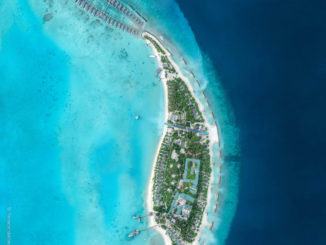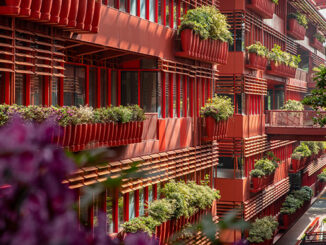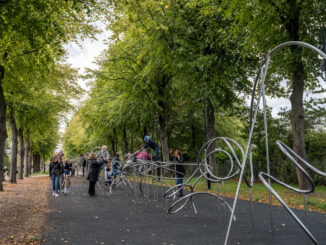Article written by Cathy Challino, Boffa Miskell
The spectre of concurrent progression and repression of place and story is something that I observe during my involvement as a landscape architect with projects that mark or memorialise a place or event.
The use of objects and elements in the landscape to recognise people and remember events is important, but rarely without complication.
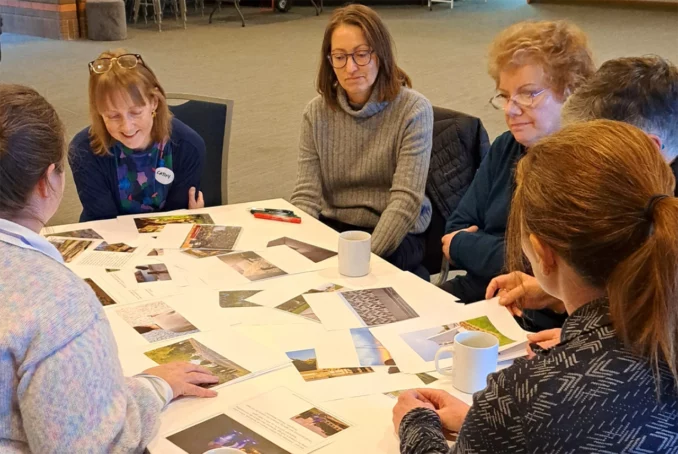
My recent involvement with an incredible group of women working to improve the visibility and status of the Kate Sheppard Memorial in Christchurch has spurred on my thinking.
People of Aotearoa can speak with some complacency about being at the forefront of the women’s suffrage movement – justifiably proud of being the first self-governing country to legitimise the right of women to vote.
However, this celebration of hope should be contextualised with the knowledge that significant inequalities in society remained. Women may have secured the right to vote, but other civil liberties continued to be suppressed for decades that followed, and some oppressive new laws were brought in around the same period. Some of these changes enabled lawful deprivation of civil rights that cut deeply and caused pervasive and long-lasting harm.
We must remember that, despite securing the right to vote in 1893, a woman’s prerogative to stand for parliament continued to be suppressed. We must acknowledge that another concurrent movement required Wahine Māori to forgo the moko kauae. This was not just suppression but stripping away an important practice and identity of a people and culture.
_________
Something I find interesting about the as-yet-unbuilt Erebus Memorial that I hope is still to be, is that there hasn’t been a lot of discussion about the place.
There has been much debate about the site, but perhaps not so much at another level. Aside from the geographic location and its relevance or otherwise to Mt Erebus, I’ve not seen a lot of commentary about the other extant markers in the landscape of the Dove-Myer Robinson Park in Parnell.
Full disclosure here, I was part of another team that submitted a design proposal that could be viewed as more modest and retiring in both size and placement. The winning design is beautiful, and rings with resonance of the Erebus tragedy. I have much admiration for its designers and their beautiful proposal. A question lingers though: Might a memorial that sat more appositely among the other layers in the place have been more achievable?
The Netherlands War Memorial, unveiled in 1963, is nearby, as is a 1992 memorial erected by the New Zealand Korea Veterans’ Association. There are also other markers dedicated to individual people like horticulturalist Nancy Steen and Jane Anna Mowbray, a president of the Victoria League in the early 20th century.
Looking further back in time there is the nearby former Mataharehare Pā site, and Te Ha, a mighty Pohutukawa which is probably as old as the Treaty (Te Tiriti) and is the country’s largest urban specimen.
What about the views to the Waitemata, and the majestic Rangitoto? I wonder if sufficient consideration has been given to how the Erebus memorial will take its place in the landscape, in the stories of the place.
You never know though; design can be a fine balance between boldness and humility. Sometimes it’s a gamble. Or is it not so much place, but time, that is the hurdle here? Are we at a point, 45 years since the event, that we’re caught between the urgent moving-forward feeling of ‘we should have done this already’ while simultaneously dealing with raw emotions that are still being brought to the surface?
This is in no small part due to the controversy surrounding the initial accident report, the subsequent review, and the fact that not only recordings, but extensive photographic footage from the moments before the crash exists. Can the past ever be the past if we can still see and hear it?
I’ve found that the design process behind an effective/affective memorial requires moving between degrees of deep empathy and pragmatic detachment – on the part of everyone involved. Perhaps, with Erebus, we’re not yet able to do that.
The thing about time, is that it passes differently for different people. For the survivors, the shock, grief and subsequent betrayal still reverberates throughout their lives. How do you make up for that? How do you tell this story, so they feel seen?
And if it’s not your story, how much room will you make for this? What will you give up?
There is something profound about the DC10 cross above Scott Base in Antarctica, made by rescue workers who couldn’t return to the crash site that day due to bad weather. It was a Sunday, 2 December 1979.
The original wooden cross has since been replaced with a stainless-steel cross for longevity, but its remoteness seems right to me. The separation is heartrending, but we know it stands there, holding the place, until we are ready.
_________
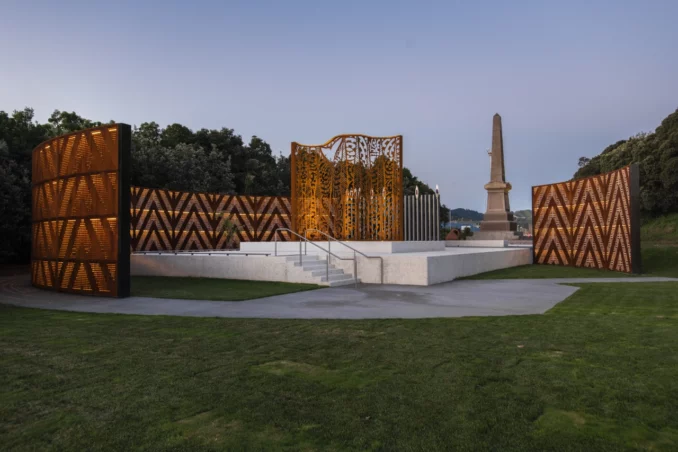
The Puhi Kai Iti | Cook Landing site project in Tairawhiti | Gisborne was a remarkable opportunity to be part of reinstating place and people.
At first, it seemed natural to respond to the existing Cook Landing monument with curved structure – a shield, an arc of grace – reflecting the spirit I see every time I am with mana / tangata whenua. But I spent a long time worrying about the potential face-off in size and scale between the existing marker of James Cook and the one that would acknowledge great Polynesian navigators who preceded him.
During this process, the trust that was afforded to me by co-designer Nick Tupara of Ngati Oneone was extremely humbling.
I think the outcome is good, but there are still things that went wrong; nothing is perfect. I can’t think of any memorial that gets everything right, has enough money, is unequivocally approved by all.
The thing that means the most to me is that our offering was accepted, and the space has been readopted. As designers we are only there briefly, the place and the stories do not belong to us. These projects will take on a life of their own, if you can find the moment, and the expression.
_________
Coming back to where I started, and the idea of simultaneous forward progress and backwards steps, I have similar thoughts about the Kate Sheppard Memorial project. What are we missing?
I want us to show our strength in empathy, encouragement and empowerment – with trust and generosity.
One of my first questions was ‘why Kate?’ It’s not all about Kate. There is also Meri Te Tai Mangakahia, Amey Daldy, Ada Wells, Harriet Morison, and Helen Nicol. And that’s just on the memorial.
What about the women before them and around them? And surely there must have been some men supporters? (Dad, this question was for you). Acknowledgement of Lord Glasgow, John Hall, Robert Stout, Julius Vogel, William Fox, John McEffer Shera and John Ballance would further contextualise the achievement of women’s suffrage.
After all, it was a collection of people moving forward together.
As a mother to a teenager, my biggest worry has been about how do we look to the future. I wonder how we allow for and involve the next generation and anticipate and accommodate how they will change the world.
Can we help them see themselves and their power? How do we include transgender people in this story? And others in the LBGTQI+ community?
When I tried to introduce this as a topic we might consider in the process, I probably shouldn’t have been surprised it didn’t really take (‘woke’, apparently!). But when frightening rates of young people are dying by suicide in this community, we need to pay attention.
Again, I believe we can turn to the wisdom of indigenous people.
In Te Ao Māori, women are te whare tangata – the house of humanity. To me, the idea of humanity is at once responsible and forgiving. And these objects we create, and these spaces we set aside for memorial and commemoration, are physical expressions of the essence of our collective humanity.
My hope is that together, this group of women will enable the creation of such a space. I worry that it may not look like what people might have in their minds, or what they’ve seen before and elsewhere. We need to find a sponsor – I worry about that too!
I’d like it to be a space for everyone, for humanity, for universal suffrage even. A place for responsibility and forgiveness. A safe space, for speaking and listening. A space for looking back and moving forward. A space for connection. But ultimately, we must wait and see.
_________
We are living in a time of deeper understanding of memorialisation, and a growing awareness of the complexity of the symbolism that memorials contain or omit. I believe that these projects offer an opportunity to acknowledge our flaws and try to right some wrongs.
I think it is an ongoing journey, and the journey should not require giving up your identity to belong – I want to see a freedom of entering for all.
Not a group, but more like a collection of people and place, with no entry requirements and the choice to be visible or invisible.
I always want to see something of the story behind the story. In Aotearoa that means the Māori stories that precede Pākehā stories. The landscape that sits underneath both.
Let’s not walk over the history of others. Let’s walk forwards, together.
Article written by Cathy Challino, Senior Principal Landscape Architect at Boffa Miskell, .

